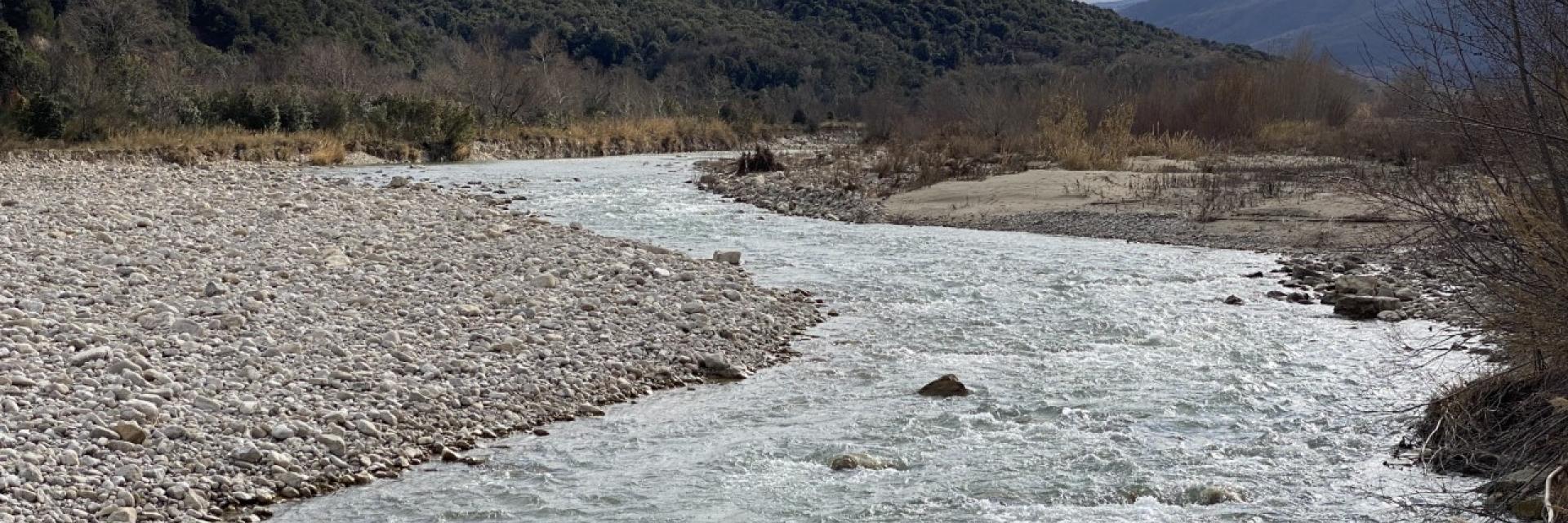Valle del Trigno
The Trigno River originates from Mount Capraro at 1,150 meters above sea level in the locality of Capo Trigno in the municipality of Vastogirardi, in the province of Isernia.
Upon entering the province of Campobasso, the river marks the border with Abruzzo (province of Chieti), diverging only in two brief sections: the first in the municipality of Trivento and the second in the municipality of Montenero di Bisaccia, before flowing into the Adriatic Sea after a journey of 85 km.
The Trigno River gives rise to a wide valley that is initially narrow and enclosed, while approximately from the municipality of Celenza sul Trigno, it becomes broader and flatter. Along the Trigno and its slopes, there are 8 Sites of Community Importance (S.I.C.) of particular conservation interest, detailed as follows:
- Collemeluccio Forest – Selvapiana – Castiglione – La Cocozza – Area: 623,900 hectares – Province: Isernia;
- Chiauci Gorge – Area: 120 hectares – Province: Isernia;
- Trigno River, Cannavine locality – Area: 410 hectares – Province: Isernia;
- Trigno River (Verrino-Castellelce confluence) – Area: 871 hectares – Province: Isernia;
- Trigno River (middle and lower course) – Area: 996 hectares – Province: Chieti;
- Macchia Nera – Colle Serracina – Area: 525 hectares – Province: Campobasso;
- Trigno Mouth – Marina di Petacciato – Area: 747 hectares – Province: Campobasso.
Closely related to the aforementioned sites, along the Trigno Valley, you can also find:
- Molisana Highlands – Area: 658,600 hectares – Province: Isernia;
- Verrino Stream – Area: 9,300 hectares – Province: Isernia;
- Colle Gessaro – Area: 66,400 hectares – Province: Campobasso;
- Gessi di Lentella – Area: 43,600 hectares – Province: Chieti.
The presence of so many protected habitats, considered a priority by the European Union, clearly manifests the great natural value of this still little-known valley.
In ancient times, the river was called Trinius and was known to the Italic populations since several important centers of their origin dominated its valley. Among these, the most famous are Pietrabbondante, Trivento, Schiavi D’Abruzzo, and Montefalcone del Sannio. On the Trigno, there was a small port that served the Balkans, possibly identifiable with the Trinium portuosum mentioned by Pliny the Elder.
Near Roccavivara, on the right bank of the Trigno, is the Church of Santa Maria in Canneto, a true gem of Romanesque art, surrounded by a small grove that overlooks the riverbanks.
Further along, the Trigno enters the area of the San Salvo industrial complex. Until a few decades ago, the Sant’Angelo Plain, where the San Salvo industrial complex is now located, hosted a vast lowland forest, considered the largest in Abruzzo, which extended to the mouth of the Trigno.
Fuente: https://visitmontifrentani.it/valle-del-trigno-20126

